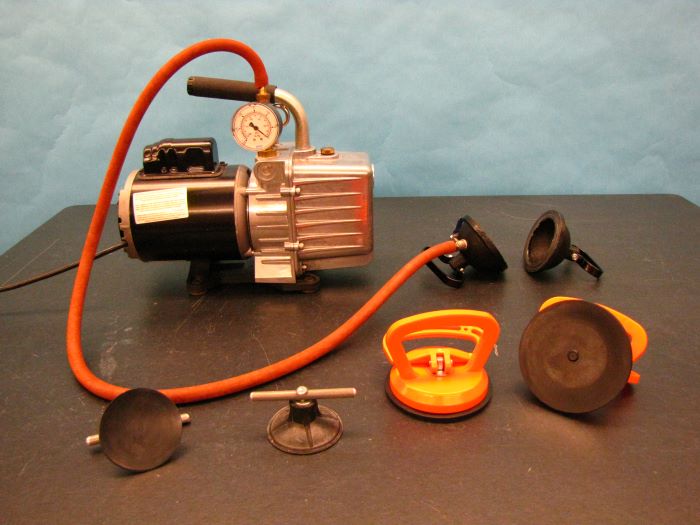Demos: 2A-02 Magdeburg Hemispheres

This more modern version of the famous Magdeburg Hemispheres uses two disks instead of hemispheres, but the principle is the same. Two disks are placed together face to face. The inner portions of the disks are hollowed out so that when they are placed together, a hollow chamber is formed. If the chamber is evacuated, the disks are almost impossible to separate because of the large pressure forces holding the disks together.
Directions: Before attaching the vacuum hose to the connector on the disk, show that by placing the disks face to face, they separate easily. Connect the hose to the disk and turn on the vacuum pump. After about a minute (when the pump ceases making the “gurgling” sound), close the valve on the disk and turn off the pump. Have a student hold one disk while you hold the other and try to pull them apart. Then open the valve and show that they once again pull apart easily.
Suggestions for Presentation: Tell the story (and/or show the woodcut which appears in most texts) about Otto von Guericke, Burgomeister von Magdeburg, and his demonstration of the vacuum pump. To connect this concept with Newton’s Third Law, ask what would be different if only eight horses were used and the other half of the sphere attached to a solid support such as a tree or post. (It wouldn’t make any difference, but sixteen horses is much more dramatic!)
As a follow-up, determine the approximate surface area of the inner chamber and calculate the net pressure force on the disks. (The chamber will not be a perfect vacuum, but good enough for the calculated results to be in the right ball park.)
Applications: Suction cups, opening of refrigerator doors.
Last Updated: Nov 30, 2023 11:25 AM